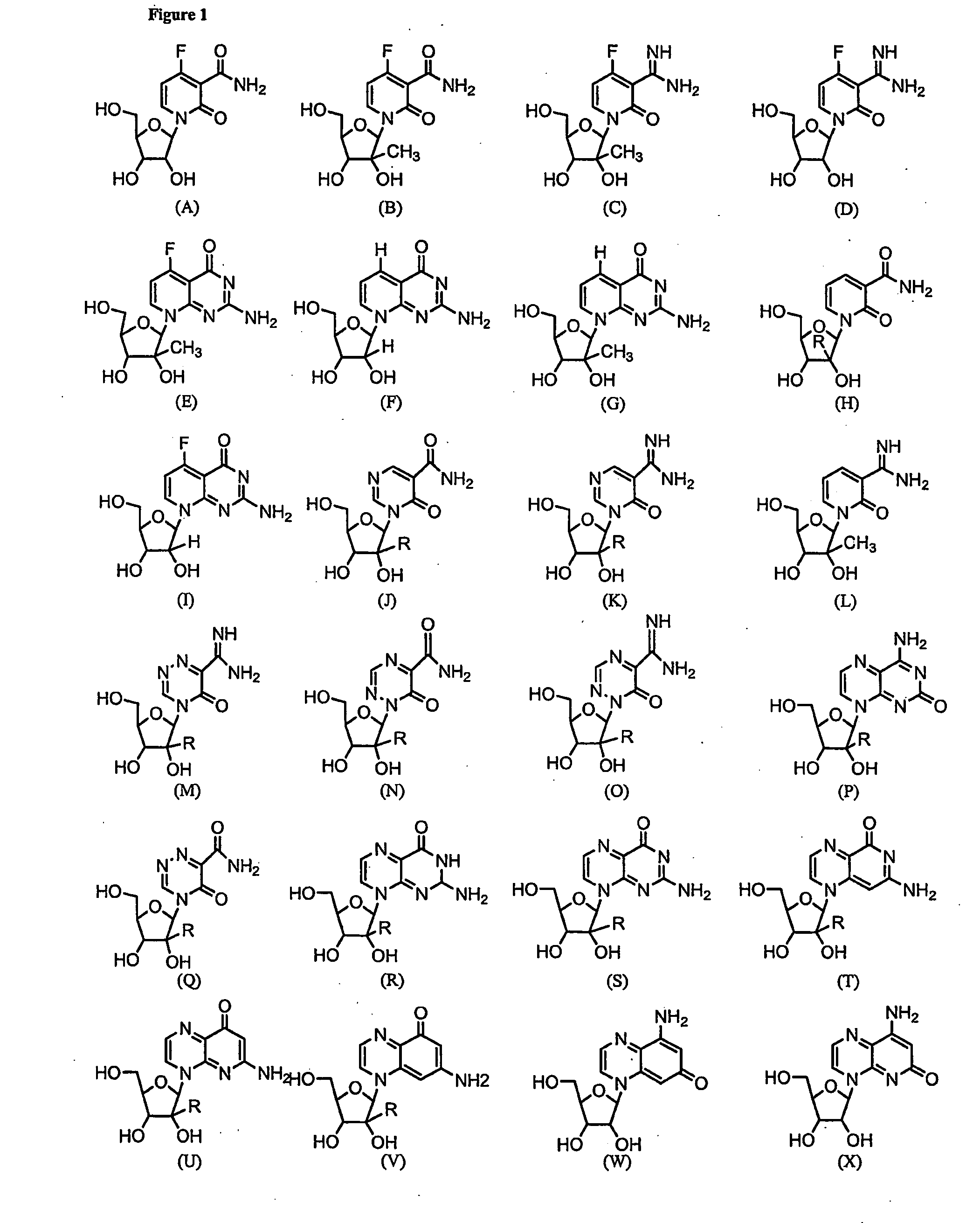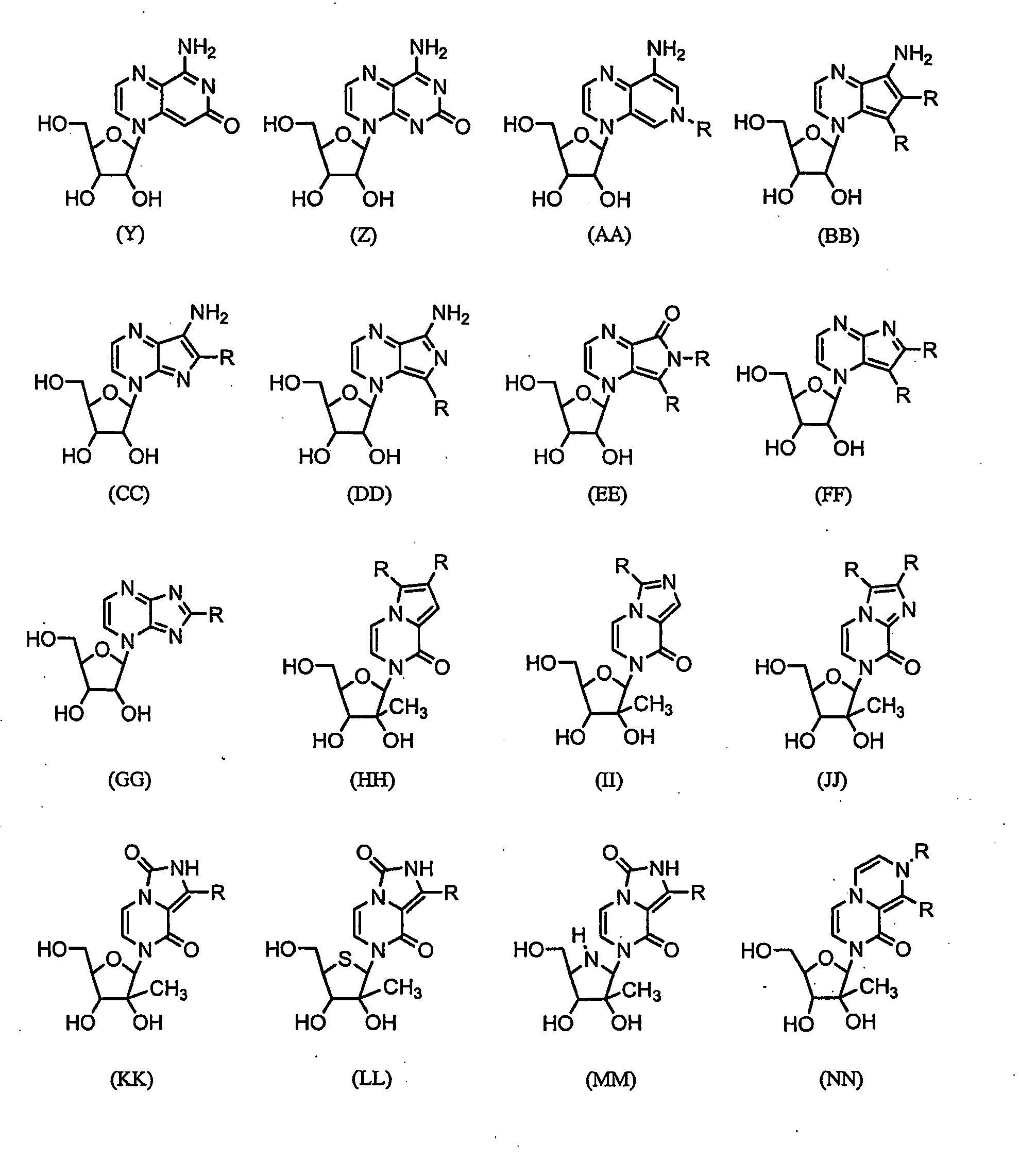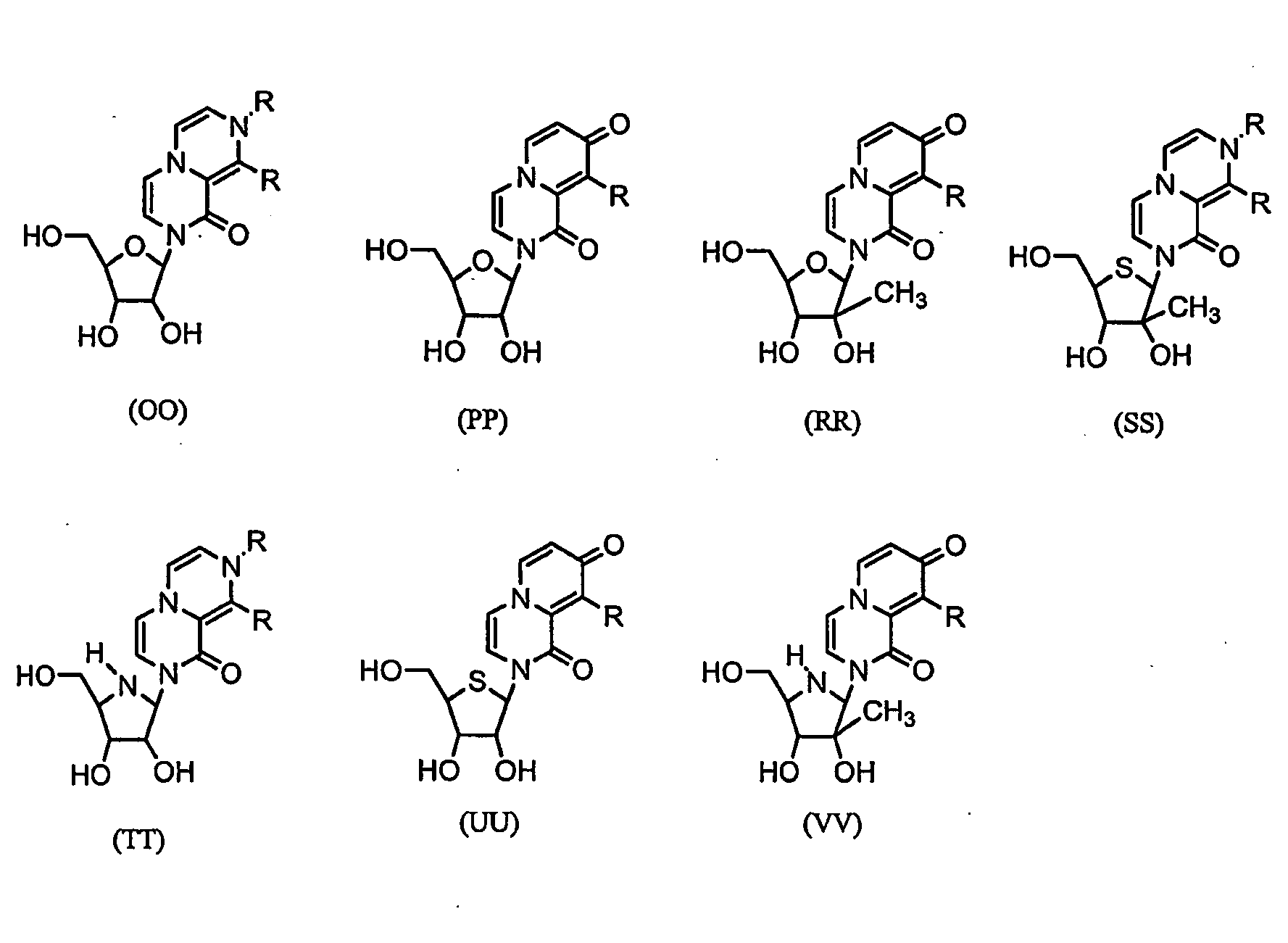Nucleosides With Non-Natural Bases as Anti-Viral Agents
a technology of nucleosides and antiviral agents, applied in the field of nucleoside derivative compounds, can solve the problems of significant economic losses worldwide, insufficient classification of the diversity of hcv isolates found, and considerable pestivirus exposur
- Summary
- Abstract
- Description
- Claims
- Application Information
AI Technical Summary
Benefits of technology
Problems solved by technology
Method used
Image
Examples
example 1
Preparation of 2-hydroxy-3-carboxamidopyrazine
[0771]
[0772]To an aqueous solution of diethylaminomalonate (hydrochloride form) was added sodium hydrogenocarbonate (pH>7). After extraction, the organic phase was evaporated under reduced pressure and treated with an ammoniacal solution of methanol at 80° C. overnight to give aminomalondiamide quantitatively. This compound was used for next step without purification and dissolved in water. To that solution was added glyoxal sodium bisulfite hemihydrate, this reaction mixture was stirred at 90° C. for 3 h, and then made basic with 58% NH4OH. Then, 30% H2O2 was added dropwise with rapid stirring to the cold solution (0° C.) [J. Med. Chem. 1983, 26, 283-86, J. Heterocyclic Chem. 1979, 16, 193]. The reaction mixture was allowed to warm at room temperature and the desired 2-hydroxy-3-carboxamidopyrazine precipitated. The solid was collected (63% yield) and part of it recrystallized.
example 1a
Condensation Reaction with Acylated Sugar
[0773]
[0774]3-Hydroxy-2-pyrazinecarboxamide was silylated using hexamethyldisilazane or bis(trimethylsilyl)acetamide and treated with appropriated acylated sugars in anhydrous acetonitrile in presence of tin chloride [Toyama patent JP 2004043371 A2 20040212]. The reaction mixtures were heated at 90° C. for 1-2 h and led to anomer mixtures which couldn't be separated after silica gel column chromatography. Those anomer mixtures were debenzoylated and purified by reverse phase chromatographies to give unprotected α- and β-3-carboxamidopyrazin-2-one derivatives.
example 2
Pyridinone Carboxylic Acid Nucleoside Analogs
[0775]
[0776]The condensation mixture was refluxed for 2 hours and 2 major compounds 2 and 3 were isolated. This reaction was described in the ribo series using either TMSOTf or tin chloride as coupling reagents [Nucleosides, Nucleotides &Nucleic acids 2001, 20 (4-7), 731; Nucleosides &Nucleotides, 1991, 10 (6), 1333]. Deprotections of 2 and 3 were quantitative and led respectively to products 4 and which were purified and recrystallized.
PUM
| Property | Measurement | Unit |
|---|---|---|
| temperature | aaaaa | aaaaa |
| concentration | aaaaa | aaaaa |
| pressures | aaaaa | aaaaa |
Abstract
Description
Claims
Application Information
 Login to View More
Login to View More - R&D
- Intellectual Property
- Life Sciences
- Materials
- Tech Scout
- Unparalleled Data Quality
- Higher Quality Content
- 60% Fewer Hallucinations
Browse by: Latest US Patents, China's latest patents, Technical Efficacy Thesaurus, Application Domain, Technology Topic, Popular Technical Reports.
© 2025 PatSnap. All rights reserved.Legal|Privacy policy|Modern Slavery Act Transparency Statement|Sitemap|About US| Contact US: help@patsnap.com



